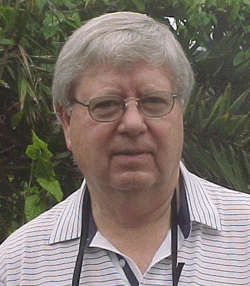Calvin O. Qualset has devoted forty years to the study and use of plant genetic resources. His early motivation was inspired by the needs for genetic resources in crop improvement through plant breeding. This took him to the study of the genetics of traits important to the adaptation of crop plants, principally wheat, and to design efficient strategies and methods of plant breeding. He was inspired to turn attention to genetic resources research by the simple observation that the only gene conferring resistance to the barley yellow dwarf virus in barley was found only in barleys from Ethiopia. Geographic differentiation was an important concept revealed by Nikolai Vavilov, Jack Harlan, and others. Qualset and his students began a series of studies on world collections of durum wheats and barley and the Bari, Italy durum wheat collections from Ethiopia, Algeria, and Sicily where multitrait associations could be related to spatial differentiation and on-farm selection for adaptation during the domestication of wheats. Triticale is a synthetic crop produced by hybridization of wheat and rye. Thus rye was used as means to expand the gene pool of wheat and to produce a new crop with its own unique properties. This crop presented new challenges in plant breeding which were addressed in a 20-year breeding program at University of California, Davis. A study of the triticale genetic resources developed in Canada, U.S.A, and Mexico revealed that adaptive genetic differentiation had already occurred in this young crop.

Through collaborations with colleagues in Italy, a series of studies were initiated with a wild, diploid, outcrossing relative of wheat, Dasypyrum villosum, which is native to marginal lands in the Mediterranean region. Collections from native stands in Yugoslavia and Italy, grown in common gardens, were found to show geographic diversity and traits useful in wheat breeding, such as resistance to several diseases, salt tolerance, and seed protein variants. Hybridization with durum wheat resulted in a productive combination, ‘Tritipyrum’, rather similar to triticale.
The importance of landraces to extant farmers and as genetic resources for plant breeding became more obvious through studies of collected materials. In spite of the widely known replacement of landraces by improved varieties, there are large areas in which landraces are preferred over ‘improved’ varieties in many crops. The lack of penetration improved varieties to the fields of many farmers in developing countries, was more than a curiosity. The reasons were largely unknown, or anecdotal at best. Clearly, ethnological, genetic and agronomic factors must be examined. A series of studies in Turkish wheats with Steve Brush and students in the mountainous transition zone in western Turkey revealed farmer preferences for their native wheats because of stability of production, bread-making properties, and value of the straw as fodder for their animals. The concept of this study was extended recently to the multicrop milpa system in Mexico, where maize, squash, beans, and wild plants are the principal components of a food system in large areas, mostly mountainous, of Mexico. The progenitors of these crops are sympatric, making an ideal opportunity for study of diversity and gene flow. With support of The McKnight Foundation, scientists and students from eight research institutions in Mexico and U.S.A. undertook socio-economic, genetic, and plant breeding studies on this important cropping system which largely dominated by landrace varieties.
Qualset is a retired professor at the University of California, Davis, and recently retired as the founding director of the Genetic Resources Conservation Program, a statewide unit of the Division of Agriculture and Natural Resources. He continues to serve as Research Professor and conducts and coordinates research on plant genomics, in-situ and ex-situ conservation of cereal crops. He serves on various boards and committees, including the Board of Trustees of the International Rice Research Institute. With some 50 graduate students and other colleagues, nearly 20 varieties of wheat, triticale, and oat were released and more than 350 research papers, reviews, and reports were published. He also served terms as Department Chair, Associate Dean, and Director of the Foundation Seed and Plant Materials Service in the College of Agricultural and Environmental Sciences at UC Davis. Cal received his BS in Agriculture at the University of Nebraska and MS and Ph.D. at UC Davis in Agronomy and Genetics, respectively.